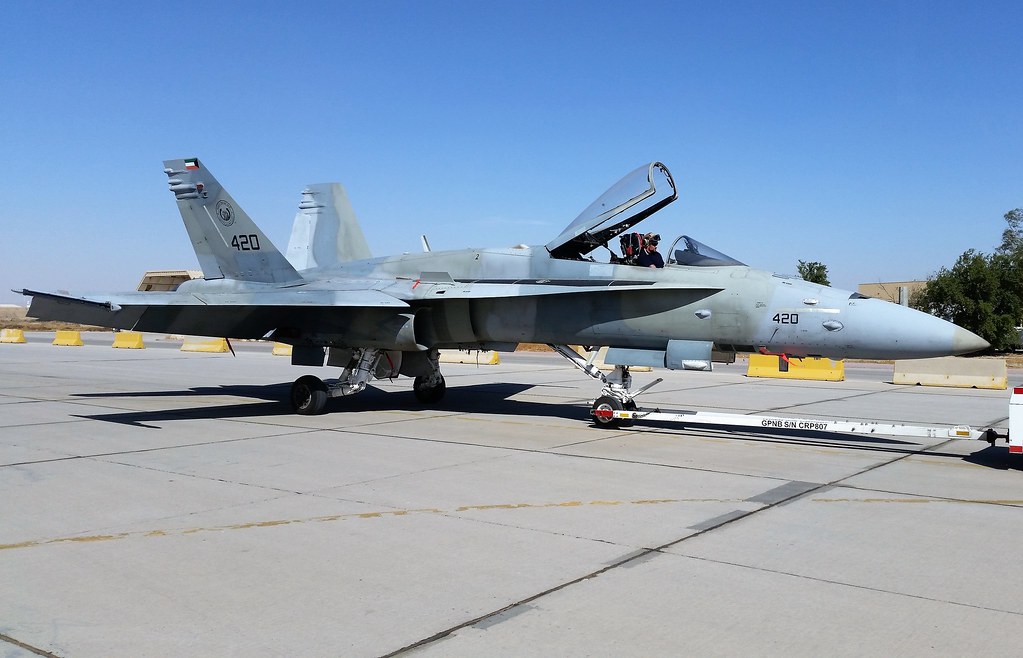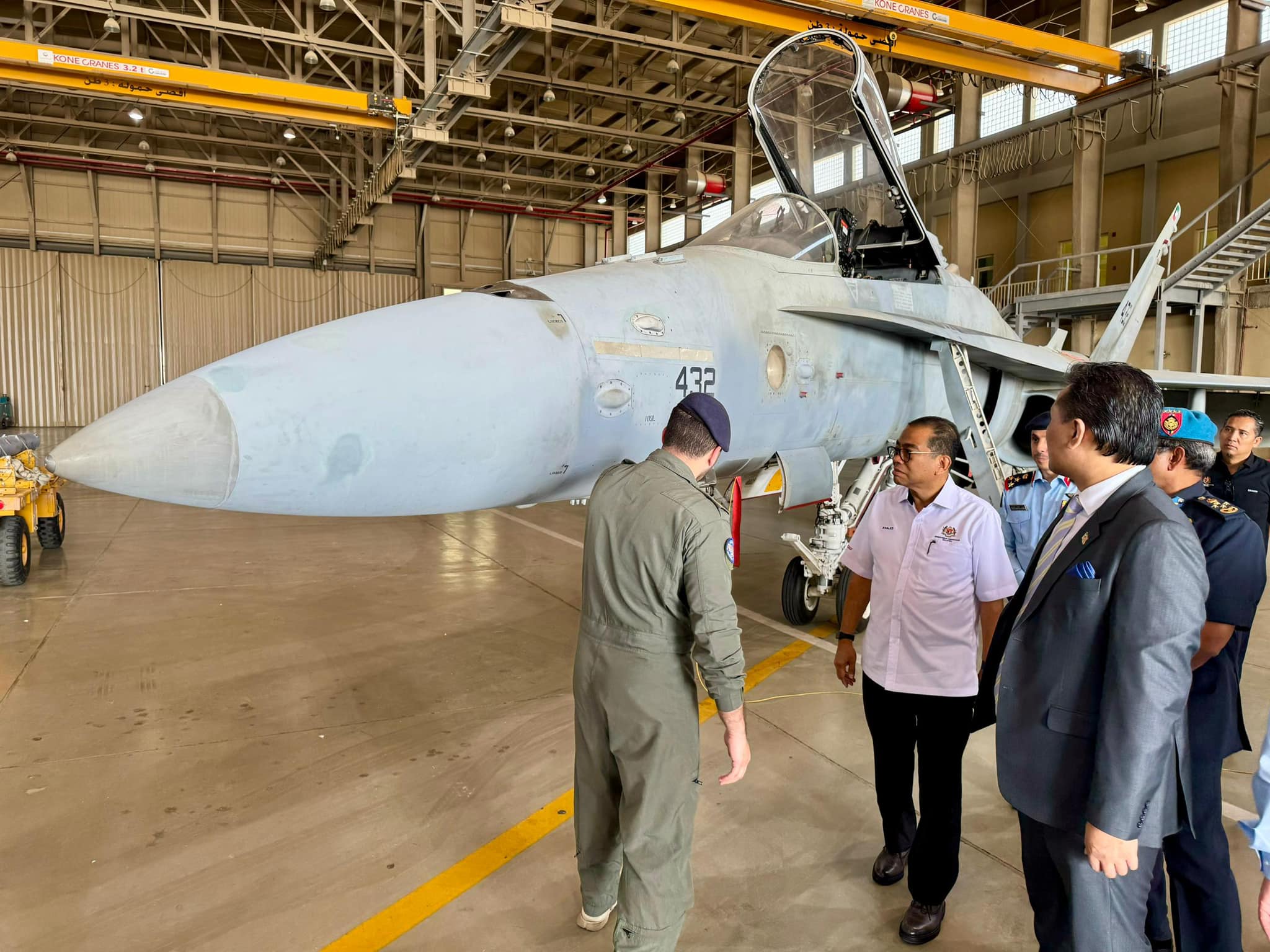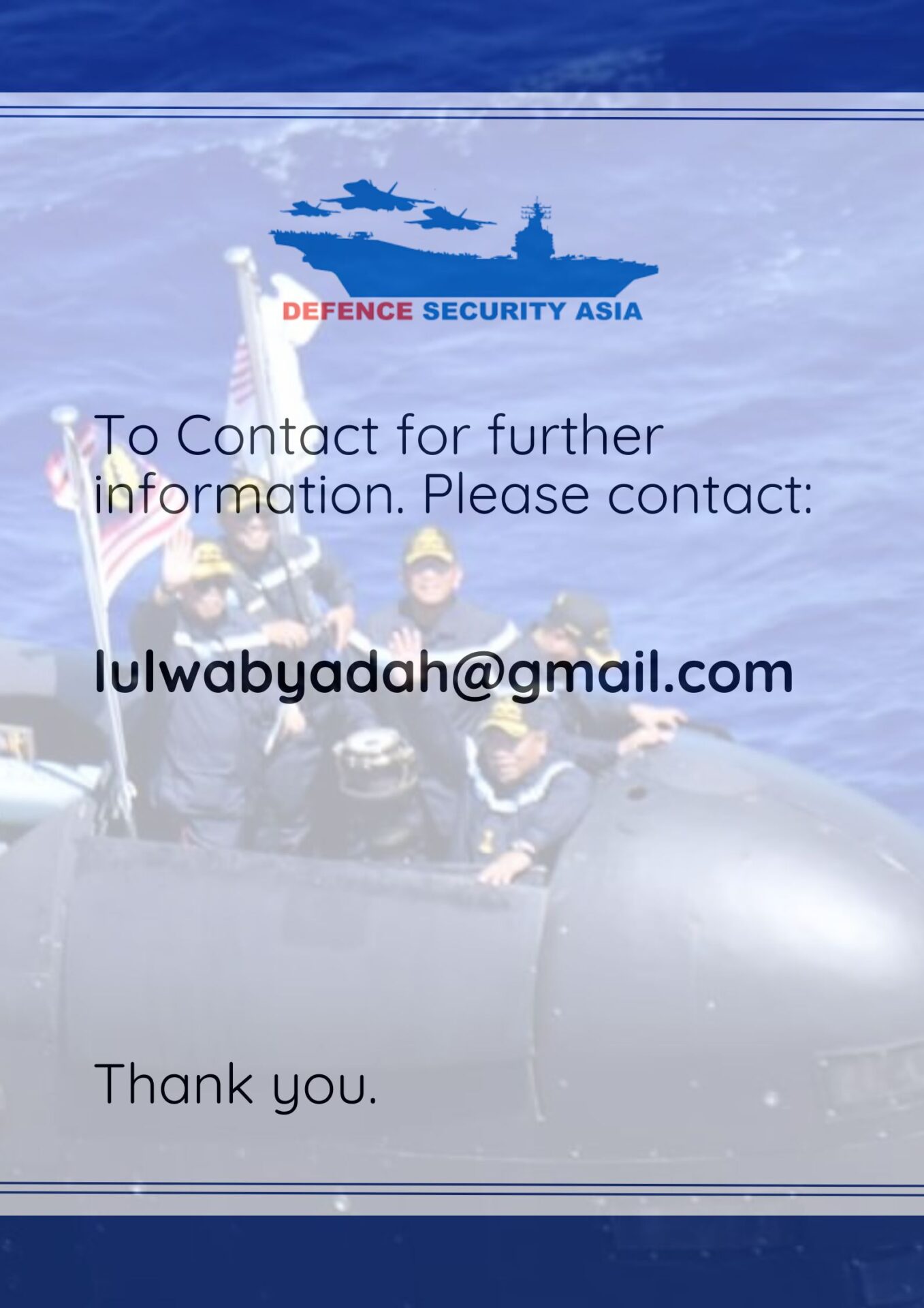Malaysia to Evaluate 38 Kuwaiti F/A-18 Hornets in September: Major Fighter Jet Deal on the Horizon
Malaysia's Potential F/A-18 Hornet Acquisition from Kuwait Signals Cost-Effective Modernisation of RMAF Combat Fleet
The Royal Malaysian Air Force (RMAF) will dispatch an evaluation team to Kuwait this September to assess the operational condition and viability of 38 legacy F/A-18C/D Hornet multirole fighters currently in service with the Kuwait Air Force.
The move comes after the United States granted official approval—required under the Arms Export Control Act—to allow Malaysia access to technical documentation and logistical records for the American-made fourth-generation fighters.
RMAF Chief General Datuk Seri Muhamad Norazlan Aris confirmed that preparations are underway to send a dedicated team of experts to Kuwait to conduct an exhaustive assessment of the aircraft fleet, including maintenance logs, airframe hours, and upgrade history.
“After the country of origin gave the green light for the acquisition, the RMAF is now able to examine the documentation and records related to the aircraft, and we have prepared a team for evaluation there,” Norazlan said during a press conference following his inaugural speech as the 21st Chief of Air Force at Subang Air Base.
“They are expected to depart for Kuwait in September to assess the suitability of the aircraft for purchase, and the evaluation process is expected to take around three weeks to scrutinize all documentation and records,” he added.
The evaluation marks a critical step in Malaysia’s efforts to close its airpower gap as it awaits the delivery of 18 newly ordered FA-50M light combat aircraft from South Korea, which are only expected to arrive beginning next year.
Norazlan emphasized that the structural condition of the aircraft is only one part of the equation, with long-term sustainability and maintenance viability weighing heavily on the assessment process.
“As is well known, these are used aircraft,” he said.
“We need to assess various aspects, especially future maintenance; there is no benefit if we can buy in large quantities but fail to sustain the aircraft operationally.”

Malaysia’s acquisition timeline is tied to Kuwait’s own air force modernization program, which includes the delivery of 28 new F/A-18E/F Super Hornets built by Boeing under a USD $1.5 billion (RM7.05 billion) contract with the United States.
“I have been informed that if Kuwait receives four Super Hornets, we could get four Hornets from them; if they receive eight, we get eight,” Norazlan explained, underscoring the staggered nature of the potential transfer.
General Tan Sri Asghar Khan Goriman Khan, the previous RMAF chief, had earlier confirmed that U.S. approval had already been secured to advance bilateral negotiations on the Hornet acquisition.
“There has been positive progress in these negotiations… we have established a joint committee involving both countries’ Ministries of Defence and the Kuwait Air Force, and the United States has granted approval for us to proceed with discussions,” he said in a previous statement.
He noted that the actual transfer process will hinge on Kuwait’s ability to integrate the incoming Super Hornets, which must be operationally fielded before their legacy Hornets can be released to Malaysia.
“As soon as Kuwait receives their Super Hornets, God willing, the transfer process to Malaysia will move forward smoothly,” he added.
Under the U.S. Arms Export Control Act, any military equipment manufactured in the United States, regardless of ownership, cannot be transferred to third parties without explicit Congressional approval.

The proposed deal includes up to 30 aircraft—both F/A-18C single-seaters and F/A-18D two-seaters—that remain in active service with the Kuwait Air Force, supported by a robust maintenance regime and relatively low flight hours.
Malaysian Defence Minister Datuk Seri Mohamed Khaled Nordin has previously remarked that the jets, procured by Kuwait in the early 1990s, are in excellent condition and still suitable for frontline duty.
During his visit to Kuwait in October last year, Khaled Nordin was reassured by his counterparts that there were no objections to Malaysia acquiring their soon-to-be-retired Hornets.
Currently, the RMAF operates eight F/A-18D Hornets alongside 18 Russian-built Sukhoi Su-30MKM heavy fighters, with the combined fleet forming the core of Malaysia’s high-end air combat capability.
The addition of the FA-50M light fighters—expected to begin entering service in 2026—will help replace the recently retired BAE Hawk 208/108 fleet, although the aircraft’s light combat role limits its reach against more capable adversaries.
Hence, the interim acquisition of legacy Hornets from Kuwait is seen as a strategically prudent and cost-effective solution to maintain force readiness in a region increasingly defined by unpredictable security dynamics and great power competition.
The F/A-18 Hornet has served as the tactical backbone of Kuwait’s air force since its post-Gulf War modernization drive, which began in the aftermath of Iraq’s 1990 invasion.
Kuwait procured 32 F/A-18C and eight F/A-18D aircraft through the U.S. Foreign Military Sales (FMS) framework, making it one of the first Gulf nations to modernize with Western fourth-generation fighters.
The Hornet, designed for carrier operations, is renowned for its dual-role versatility, capable of executing precision air-to-air and air-to-ground missions in all-weather conditions.
Over the past two decades, Kuwait has invested significantly in upgrading the platform, including the integration of modern radars, next-generation avionics, and electronic warfare suites to ensure continued combat relevance.
The Kuwaiti Hornets have participated in multiple real-world operations and multinational exercises in the Middle East, reinforcing the platform’s reputation for reliability, resilience, and mission adaptability.
Despite more than three decades of service, the fleet remains structurally sound, supported by low fatigue cycles and rigorous maintenance—a key factor in making them an attractive acquisition for Malaysia.
With all 28 Super Hornets for Kuwait—22 F/A-18E and six F/A-18F variants—now fully built and temporarily housed with the U.S. Navy, Kuwait awaits completion of upgrades to its Ahmed Al-Jaber Air Base and pilot training before the final delivery.
Simultaneously, Kuwait is integrating a fleet of 28 Eurofighter Typhoon multirole jets—22 single-seat and six twin-seat aircraft—acquired through a €7.96 billion (RM39.8 billion) deal with Italy, signed in 2016.
The Kuwaiti Typhoons feature among the most advanced configurations globally, equipped with Captor-E AESA radar systems and state-of-the-art electronic warfare packages.
To date, 13 of these Typhoons have been delivered in phases since December 2021, with the remaining aircraft scheduled to arrive by 2025.
The combined capability of the Super Hornet and Typhoon fleets will transform Kuwait into one of the most sophisticated air forces in the Gulf region, offering layered air dominance and enhanced multirole flexibility.
For Malaysia, the opportunity to acquire combat-proven Hornets that are compatible with its existing F/A-18D infrastructure offers immediate strategic value and reduces operational training overheads.
As geopolitical flashpoints intensify across the South China Sea, the Taiwan Strait, and the broader Indo-Pacific theatre, Malaysia’s decision to fast-track tactical fighter reinforcements is viewed as a necessary hedge against rising uncertainty.
With negotiations now in the final stages, Malaysia may soon join a select group of nations with dual-variant F/A-18 fleets—optimizing combat readiness while maintaining interoperability with allied air forces in the region and beyond.


